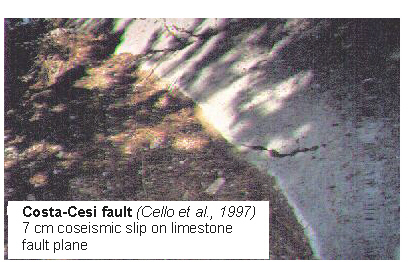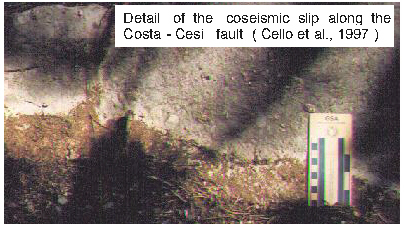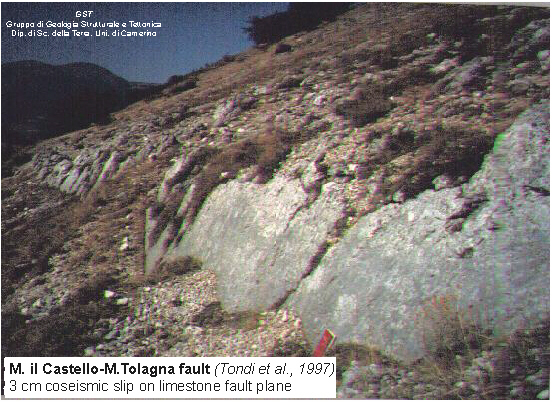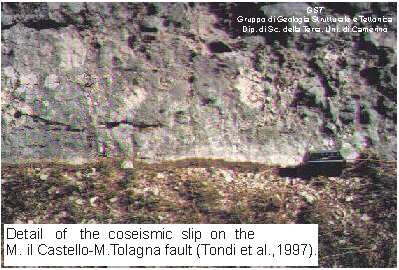
1.

2.
On september 26, 1997, right after the 02:33 local time earthquake, the ANPA (National Agency for the Protection of the Environment)-Roma, University of Camerino and CNR-GNDT-Napoli research groups of the GNDT (National Group for the Defense against earthquakes) activated a coordinated effort to survey the epicentral area for the detection of geological effects. The survey was initiated just after dawn by the Camerino group, hence well before the second shock, and in the afternoon by the other groups. The Naples group aimed at locating ground shacking effects, such as landslides and ground cracks. The ANPA-Roma and UNI-Camerino groups concentrated their efforts at detecting possible evidence of surface faulting.
The surveys immediately carried out along the capable faults of
the epicentral area, which were already mapped by the Camerino
group (Cello et al., 1997), so far have allowed the recognition
of fault reactivations along the following fault segments, striking
N120-N180 and southwest to west dipping, which control the late-Quaternary
evolution of the Colfiorito basin:




There is a fairly good agreement between these fault reactivations and the available seismological data (epicenter locations, focal mechanisms, and intensity maps). Further surveys are in progress. A more detailed report will follow as soon as new data are available.
References
Cello G., Mazzoli S., Tondi E. & Turco E. (1997) - Active tectonics in the central Apennines and possible implications for seismic hazard analysis in peninsular Italy. Tectonophysics, 272, 43-68.
Tondi E. (1997) - Analisi di alcuni segmenti di faglie attive in Appennino centrale. Dottorato di ricerca, pp. 199.
Tondi E., Cello G. & Mazzoli S. (1997) - Strutture sismogenetiche in Appennino Centrale: potenziale sismogenetico, analisi frattale e processi di crescita. Il Quaternario vol. 10, fasc. 2, (in press)